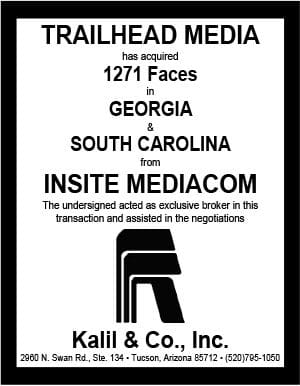 Billups Chief Strategy Officer Rick Robinson has a fascinating conversation with Brian Eck of the City of West Hollywood on the In the World podcast. West Hollywood has approved 21 innovative development projects which incorporate out of home advertising on the Sunset Strip. Robinson says “I think it’s breathtaking. This will completely redefine the sunset strip. And this will without a doubt set an example for every city across the globe on how to harmonize out of home media, public space, art, way-finding, architecture, and revenue for a city. It’s really ground-breaking and historic…” Some of the highlights of the conversation.
Billups Chief Strategy Officer Rick Robinson has a fascinating conversation with Brian Eck of the City of West Hollywood on the In the World podcast. West Hollywood has approved 21 innovative development projects which incorporate out of home advertising on the Sunset Strip. Robinson says “I think it’s breathtaking. This will completely redefine the sunset strip. And this will without a doubt set an example for every city across the globe on how to harmonize out of home media, public space, art, way-finding, architecture, and revenue for a city. It’s really ground-breaking and historic…” Some of the highlights of the conversation.
What motivated the City of West Hollywood?
It was the city’s embrace of the elements of the Sunset Strip that have long characterized the place. There’s a legacy of large format advertising signs that have characterized the Sunset Strip…while some cities learn to live with their signage and in some cases ban it altogether the city of West Hollywood has for a long time really embraced that legacy.
Sunset Strip’s history with billboards
There’s always been that interplay between what the place is and what that advertising content and expression has been. Whether that’s the rock and roll billboards famously from the 60’s and 70’s…You think of that era. You had to play at the Whiskey a GoGo but you also had to take a picture with your billboard that had the album releases part of it.
Benefits to the public
On a macro level this program is both an economic development tool and a placemaking tool for the city of West Hollywood and for the Sunset Strip…The reason I say it’s a placemaking tool is…it will demand and generate great architecture. We’ll have an arts program that is dedicated on each one of the signs. So each sign will contribute 17.5% of its operational time for arts content and civic programming…Each of the projects is required to either through financial contribution or through direct construction to create improvements to the street sidewalks or public spaces adjoining…the project. And then from the economic development piece…projects are reserved for site that include brand new ground up construction…or its reserved for existing buildings that either go through required seismic retrofits, upgrade their buildings to major façade remodels so it’ll breathe new life into the existing buildings. And then there’s a setaside for existing historic resources…
Insider’s take: West Hollywood (and Atlanta and Nashville) provide great examples on how cities can use digital signage to create economic development and to improve public spaces.
[wpforms id=”9787″]
Paid Advertisement

















